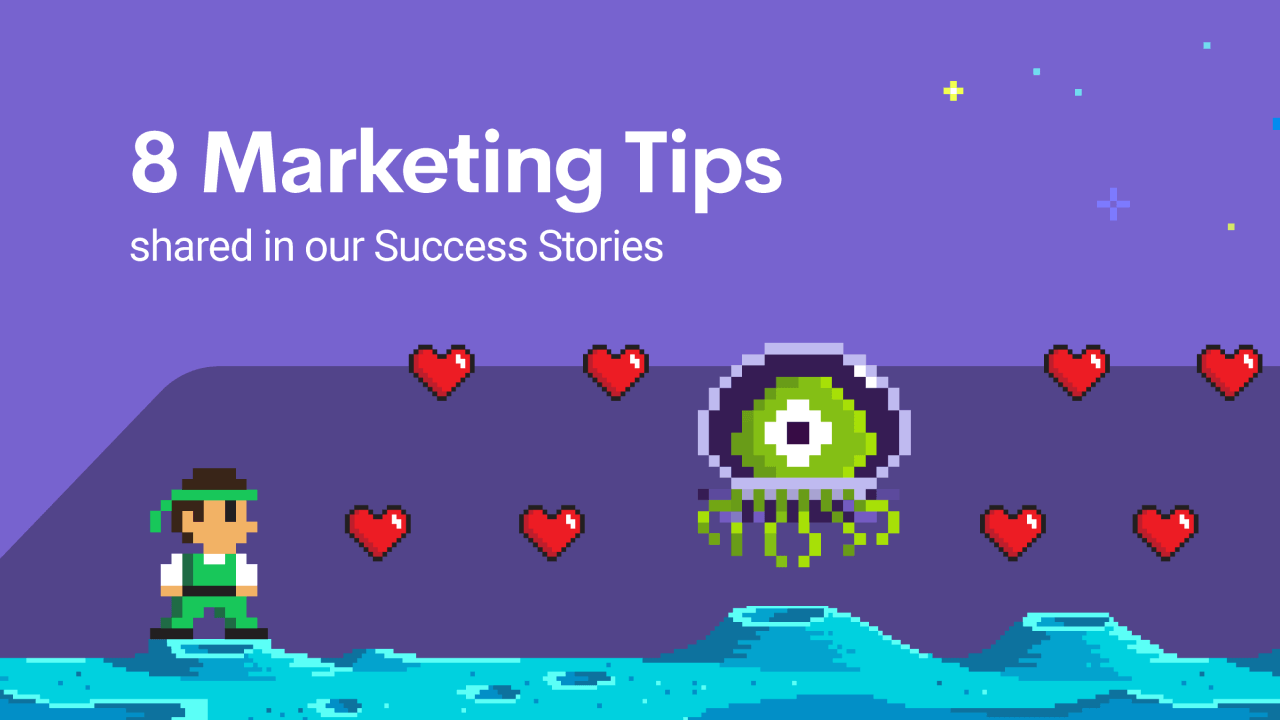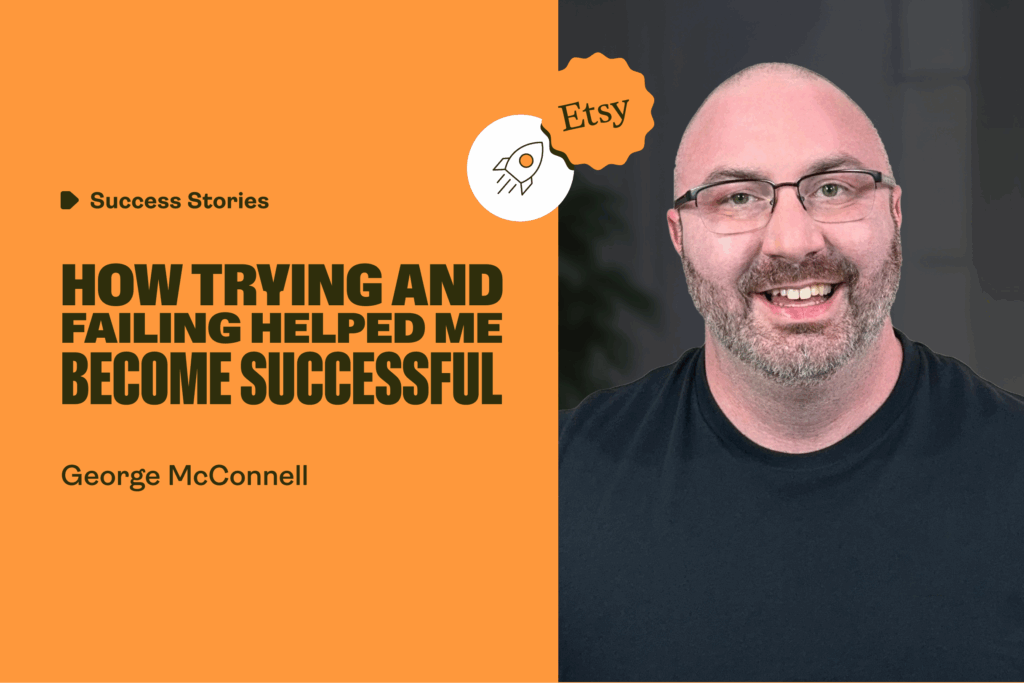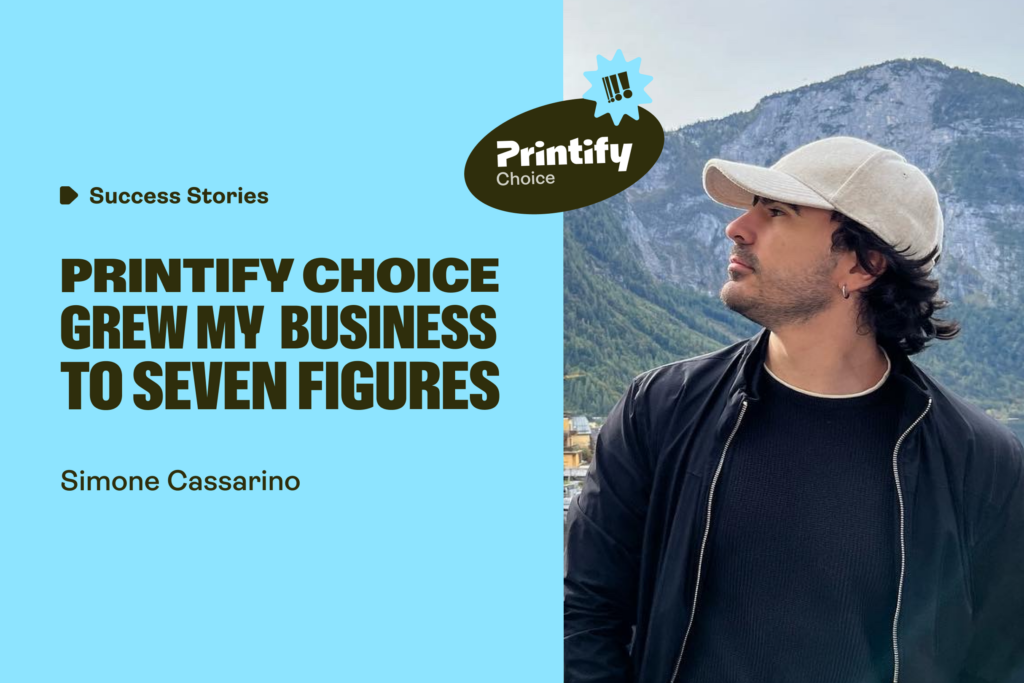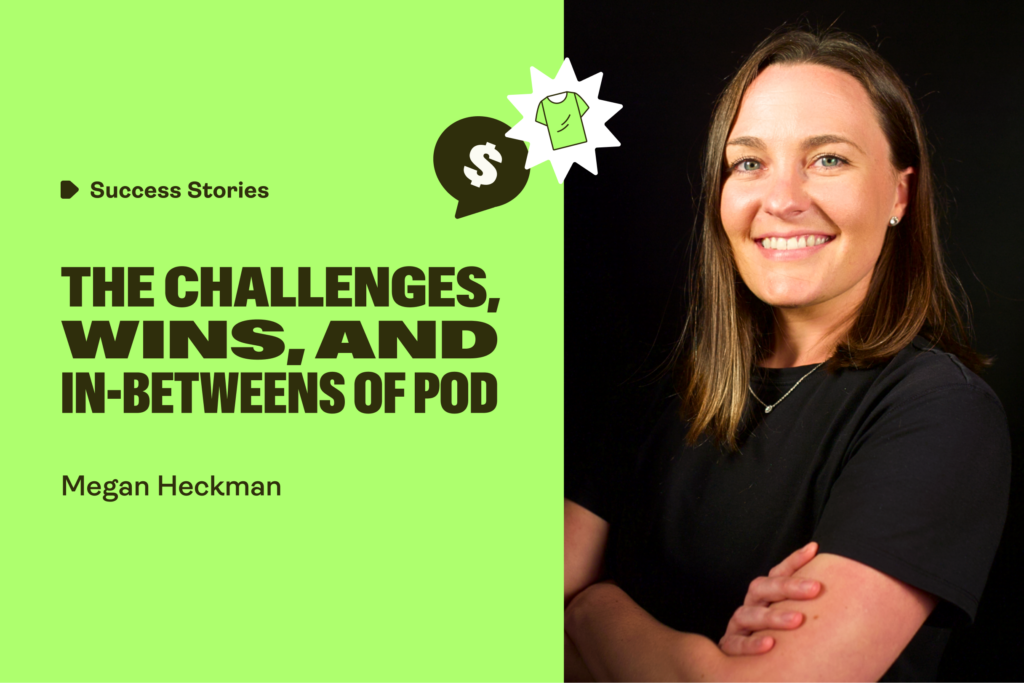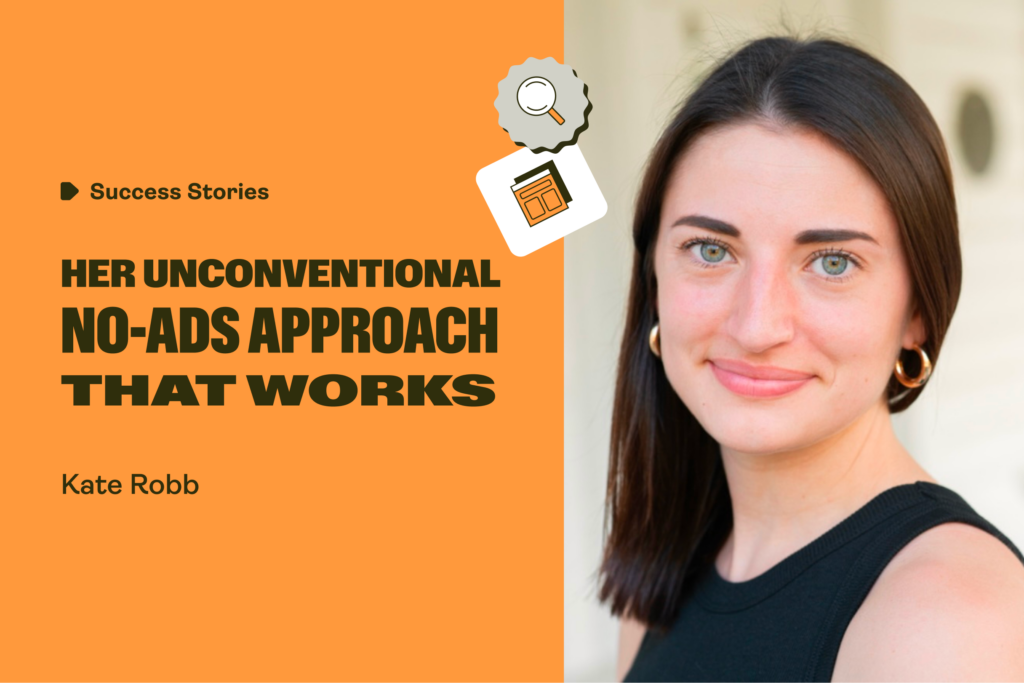Your POD success story starts now
Even if you’re a beginner to the world of Print on Demand, you’ll probably agree that marketing – including SEO, Facebook Ads, email, and more – are vital for building a successful online business in 2023.
However, it can be overwhelming and frustrating for newcomers embarking on their first marketing journey when faced with so much conflicting advice.
In this recap of our Success Stories series, we’ll look at what our print-on-demand pros say about online marketing. We’ll ask them to share some techniques and tips that helped them attract new customers to their stores and create a stronger brand identity for their products.
Learn more about print on demand and starting a print-on-demand business.
1. Stay focused and believe in your products
The first of our print-on-demand marketing tips for beginners is to stay focused on your goals and only sell products and designs that you’re personally invested in.
Sure, you could simply hunt for gaps in the market and sell generic products and uninspiring designs to make a quick buck, but it’s far easier to stay focused and motivated if you genuinely believe in what you’re selling.
When we spoke to Michael Scott Peterson, a Florida-based designer, and owner of the clothing label “Premium Blend”, we were struck by how passionate and enthusiastic he was about every aspect of his business. Something that has undoubtedly accelerated his success:
“I need to believe in my brand so that other people can have the confidence to believe in it too. I feel like it’s my job to design clothing that gets people talking and exchanging words and ideas.”
Michael isn’t just passionate about what he does. He’s also hyper-focused and a huge perfectionist, to the extent of personally wearing what he’s designed for his brand:
“I’m constantly asking myself if the quality is good enough to send out. That’s why I always wear my own products so that I’m confident with how the items look, how they feel, and whether they’ll be durable.”
Michael has such a strong vision and belief that he’s become his own brand ambassador, taking to the streets and social media to personally show off his designs to influencers, random passers-by, and pretty much anyone wanting to connect.
2. Make learning about SEO a top priority

Even if your designs are on point and you have laser-like focus and dedication, you’ll still need to learn the basic principles of print-on-demand marketing and SEO if you want your products to get found without relying on paid advertising.
SEO stands for search engine optimization and applies to online marketplaces like Amazon and Etsy, along with search engines like Google, Bing, and Yahoo.
In our interview with Rich Khun, a highly successful print-on-demand seller and budding YouTube influencer, he explained the importance of SEO for print-on-demand marketing:
“Etsy has lots of traffic these days, just like Amazon and eBay. You just have to figure out what the people there are looking for. Getting into the top search results plays a huge role in a successful Etsy sale.
That means you need to niche down. Terms like “birthday shirt” are going to be hugely competitive. That’s why I always add separate interests or subjects on top of that to make it less of a competitive niche. For example, if you’re selling a birthday t-shirt, add in the word “Dad,” then “BBQ,” and you have something much more focused and unique.
So I’m using something like a birthday or a holiday, then adding a hobby or interest layer to niche down and corner a specific SEO term and audience.”
Christopher Sattes, an Etsy seller with a very unique business angle, agrees with Rich Khun, placing great importance on SEO for print-on-demand marketing:
“SEO is crucial if you want to build a successful Etsy business. Print-on-demand services are taking off, and in general, you’re competing against a lot of other sellers. It’s important to make sure your listings are done right, and equally important to use tools such as Google Keyword Search to find the items people are looking for so that you can be laser-targeted in what your store sells and how it describes those items.”
Amongst Christopher’s marketing tips for Etsy, he emphasizes the importance of using keywords in as many places as possible, filling his listings with phrases that will draw in the right audience:
“Keyword saturation is very important, so make sure that you use as many keywords as possible and try to get them into the title of the listing as well. If you want to go the extra mile, you should use the same keywords in the description too.”
These two entrepreneurs are keen to get the key takeaway across – building an online store and hoping customers will appear simply won’t cut when marketing print-on-demand businesses.
3. Try to come up with a unique niche
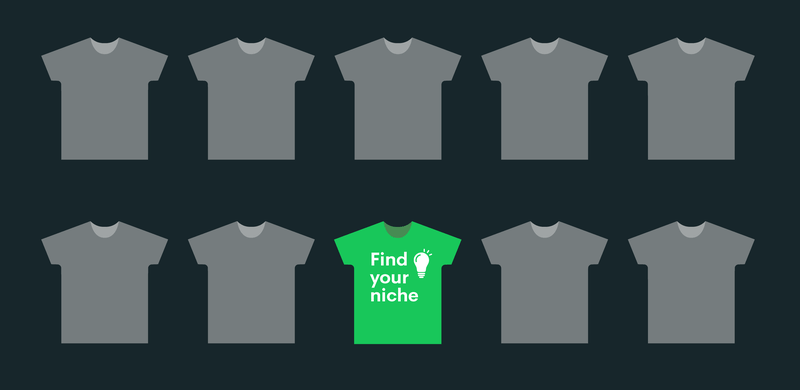
Once you’ve started exploring the processes behind SEO and keyword selection, you’ll quickly spot unique angles or “niches” that enable sellers to position their products towards very specific target audiences.
Christopher Sattes chimes in once more on the importance of selecting an original niche as part of your print-on-demand marketing strategy:
“You need to find a niche. Everyone is selling t-shirts with graphics or sayings, and you often see the same ideas and designs repeatedly. If you do the same thing as everyone else, you end up being a small fish in a massive pond, so you end up relying on luck to make a sale.”
“It’s possible to build a successful Etsy business without a specific niche, but it will take more time. I did Etsy marketing for a store with no specific niche, slowly ramping up my advertising budget to $5 a day and eventually ending up at $10 a day. That helped bring in the customers, but it takes a great deal of time.”

4. Align your marketing with your audience
Print-on-demand marketing can feel a little like a dark art at times, especially for beginners who haven’t yet found their own niche or brand persona. We interviewed Raihanaty A. Jalil, an Australian entrepreneur, and owner of the clothing brand SHYFT Creations. She gave us some awesome marketing tips for beginners to help them stay on track:
“If you’re a new print-on-demand seller, I’d say the most important thing is to always think about your market. Your audience is really important. Everything in eCommerce centers around the people who will buy your products.”
Raihanaty tried to imagine the type of person most likely to buy her designs to create a more focused branding and advertising strategy:
“I knew that most of my audience would be guys that liked sports, hip-hop, and looking good. I tried to think about how brands like Nike and Fubu marketed their products and tried to tap into that culture.”
Once Rai had researched and better understood her niche, she applied that knowledge to every detail of her website:
“I thought carefully about the colors I used, and even the lingo and photography on my site needed to reflect the right vibe. You need to be relatable and appealing if you’re going to promote apparel, and you need to grab people’s attention instantly.”
Raihanaty is proof that if you have a deep understanding of your products and the type of person they appeal to, you don’t need a background in marketing to create a unique selling point or a strong brand identity.
5. Always test and tweak your Facebook Ads

Facebook Ads can be a powerful tool for eCommerce, print-on-demand marketing, and sellers looking to attract traffic to their websites and listings. Still, many newcomers are put off by the idea of spending money before they’ve made a decent profit.
Unfortunately, Facebook Ads come with a learning curve, and if you’re going to experiment with paid ads, you’ll need to invest a little cash to get started.
With that in mind, our main marketing tip for Facebook is to proceed with caution, ensuring that, like Raihanaty, you have your target audience in mind, as well as the patience and willingness to test and tweak your campaigns:
“The key thing for me was getting used to the idea that I wouldn’t make a sale until I’d tested 10-20 ads. I try to stay methodical, running three-day tests and learning from the results. I experiment with pictures, headlines, wording, and videos. I test everything until I find the right audience.”
Rai’s methodical mindset eventually paid off, but it took several attempts to find the right formula:
“I created ad campaigns with photos that I loved and thought would work well. As it happens, the images I considered boring actually had a much better engagement.
Ultimately, I was lucky enough to have a very successful ad campaign for one of my beanie hats. It just happened to be winter in the USA, and I went from my usual ten likes to over 700!”
6. Don’t forget to leverage offline marketing
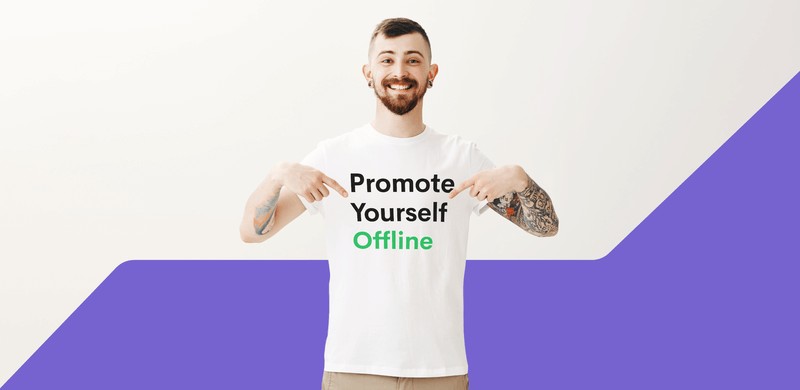
In a world jam-packed with social media platforms and hundreds of gurus offering advice on making money online, many beginners forget that the offline world still offers some powerful opportunities for marketing.
Michael Scott Peterson’s brand, Dope Designs, was built almost exclusively out in the real world, using a boots-on-the-ground, old-school approach to advertising:
“I’m really into the idea of wearing my designs. I think designers should create things they’d be happy to wear themselves.
I remember when some of my favorite musicians sold music from the trunks of their cars, so even though I’m heavily into Facebook and Instagram, I’m always keen to promote my designs in the real world. I often carry a few samples when I’m out, as I’ve had people approach me and ask where I got my shirt from.”
Unsigned bands and other subcultures have been using this marketing method for decades – word-of-mouth recommendations are probably the best kind of endorsement a brand can receive because they instantly come with plenty of kudos and social cache, especially if you can get a local influencer to praise your work.
7. Use software tools to help you succeed

Successful print-on-demand marketing relies heavily on patience, determination, and a good understanding of SEO and branding. However, while you can’t rely on software or apps to do your marketing for you, they can help with the heavy lifting.
Here are some of the tools that our success story entrepreneurs use to make life a little easier, starting with YouTuber and print-on-demand pro, Rich Khun:
“Because I’m focused on keywords and general terms like birthdays and holidays, I use Sale Samurai, which works very well for figuring out which keywords are ranking in Etsy. I also use Google Trends to give an analytical view of what people are into.”
Christopher Sattes primarily sells products on Etsy, using Marmalead for SEO and Vela for bulk editing his listings. While those tools are undoubtedly helpful, Christopher is also keen to explain why it pays to get familiar with video creation:
“Videos significantly impact listing popularity. I made a video for my pet portraits and noticed a massive increase in the sales of linked items. It’s all about boosting your brand identity.”
Raihanaty, on the other hand, is more focused on customer service and automating her promotional emails through her Shopify store:
“I think the most important tool for an online entrepreneur is a good email campaign app. I personally love Klaviyo, it’s so easy to use compared to some of the big named providers. Klaviyo makes it super simple to set up email campaigns and automate a lot of the processes on my site, like welcome emails and mailing lists.”
The important takeaway here is that the right software can save you plenty of time. Still, it’s no substitute for spending hours going through print-on-demand marketing materials to come up with a sound marketing strategy.
8. Use the right business model from the outset
We’re going to end our list of print-on-demand marketing tips with a little self-promotion of our own, letting some of the pro sellers that we interviewed explain the importance of picking the right type of business model to ensure eCommerce success:
“Using Printify means that when you spot a niche that you want to enter quickly, you don’t have to worry about buying in stock or equipment, and with the automatic order routing feature, you don’t need to worry about supply chain issues either.” – Rich Khun
Printify’s print-on-demand service not only makes setting up an eCommerce business fast and simple, but it can also lead to a source of passive income, leaving you more time to concentrate on growing your audience:
“I always think of ways to automate my sales processes, with a view to a side business eventually being a completely passive source of income. I’m at the point with my Etsy store where I can have a team of artists do the work for me, and with Printify, those products are entirely hands-off for me now.” – Christopher Sattes
To summarize
So, there you have it. Eight print-on-demand marketing tips for beginners that will hopefully inspire you to take your brand to the next level, carve out your niche and enjoy the success you’ve always dreamed of.
You can go from a mere idea to running a successful online store with help from a worked-out marketing strategy, a simple software tool, and – most importantly – a reliable print-on-demand service like Printify.



